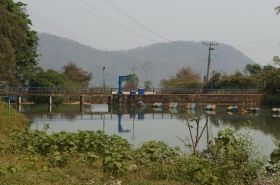The Mekong River, one of the world’s largest, traverses six Southeast Asian countries and supports the livelihoods of millions of people. New efforts to provide hydroelectric power to a growing and modernizing population include more than eight proposed main-stem dams and 60 or more existing tributary dams in the lower Mekong basin. A new article from University of Illinois and Iowa State University scientists lays out what dam construction could mean for residents and the environment in the region.
“Development projects, such as dam construction on the Mekong River and tributaries to support a booming hydropower industry, are bringing great change to ecological, agricultural, and cultural systems in this region,” says Kenneth Olson, professor emeritus in the Department of Natural Resources and Environmental Sciences at U of I and co-author of the article.
In the article, Olson and co-author Lois Wright Morton provide the context of this unique coupled natural-human river system – its hydrology, geology, ecology, seasonal flood cycle, and human dimensions. They also delve into the politics and the potential effects of the dams, focusing specifically on the Xayaburi Dam in Laos.
Olson and Morton report that construction on the Xayaburi Dam, the first dam south of the China border to be constructed across the main stem of the Mekong River, has been quietly underway for years and is scheduled for completion in 2018. The dam has incited worldwide opposition, as well as local protests and violence.
Read more at University of Illinois College of Agricultural, Consumer and Environmental Sciences
Image: Scientists say dams on the main stem of the Mekong River could disrupt lives and drastically alter the environment in the region. (Credit: Kenneth Olson, University of Illinois)


